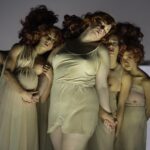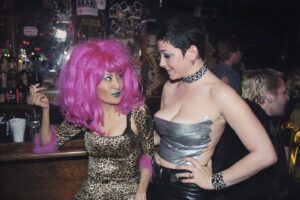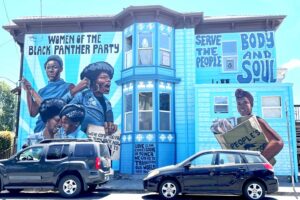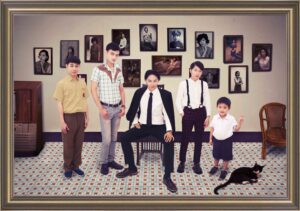
American industry took form in artistic expression with the San Francisco debut of fine art photographer Susan Mikula‘s American Device: Recent Photographs, that opened at the George Lawson Gallery in 2010. The exhibit follows a successful New York exhibit of sic transit, and Bearings, an exhibit of her work in Provincetown, MA, earlier in the fall.
Susan, 53, a former accountant and the partner of openly lesbian MSNBC political commentator and Bay Area native Rachel Maddow, traded her calculator for her camera in 2010 to pursue her fine art photography career full-time.
“It feels great,” says Susan, an accomplished photographer whose work has exhibited throughout the U.S. since 1998. She never imagined the whirlwind 2009 turned into. “That’s sort of beyond my wildest dreams to be coming off all of that stuff, and to go into San Francisco.”
A lover of “all of the historical forms of photography,” Mikula particularly connects with its struggle for recognition as a fine art. She inherited her appreciation of photography from her father.
“My dad had an incredible eye in photography and briefly worked in documentary and wedding photography while he was learning how to be a pilot,” says Susan. “Even now, photography suffers a little bit as sort of the poor cousin of painting.” She is fascinated by the obscure, the offbeat outsider, the mystical, and the effects and passage of time and light.

American Device continues Susan’s decade-long exploration of America’s fringe and the tradition of American folk art. “I don’t think that the only people who make art are artists,” she said.
“These are places that many people think of as a blight on our country,” she says about photographing industrial areas in Long Beach, CA, and along Galveston Bay and the Gulf of Mexico during the dead heat of Summer 2009.
“These are places that people do not think are beautiful, but there is something really beautifully American and wonderful about these places, and not just from an object point of view. These are places that still make jobs and products, a livelihood of our country.”
Susan is passionate about supporting living, working artists. While she has a profound reverence for the history of photography – her favorite classic photographers are Margaret Cameron and Ralph Eugene Meatyard – she prefers to buy art from working artists. Some of Susan’s favorite contemporary photographers are Hiroshi Sugimoto and Sally Mann.
“It’s important to support art to keep it moving. When you buy a piece of art from someone who is living now, making their living as an artist, it lets that person move forward. It’s almost like an investment in the future of art, in the future of the good health of art.”
Susan not only finds the beauty in places and objects that are the infrastructure of our nation, but she produces her work on 1970s Polaroid cameras using soon-to-be-extinct SX-70 film, and prints on American-made archival paper using archival inkjet ink.
“I love, love my Polaroids.” Susan credits Polaroid as an important part of American history and the “democratization of photography.”
She plans on using the cameras and film that she scavenges for in thrift stores and yard sales “until they pry them out of my hands.” The age of the unexposed film and the personality of the old cameras add to Susan’s art, she says.
“They are to me the very beginning of America’s complete love affair with the instantaneous,” says Susan, who is beginning to work with wetplate collodion and tintype, the earliest forms of instantaneous photography developed in the 19th century.
For more information, visit www.susanmikula.com.
Originally published in the Bay Area Reporter.







